For the last 100 years, the Tomb of the Unknown Soldier has been an important military memorial in the United States. This monument followed the example of others like it in the United Kingdom and France. Today, several countries around the world have similar memorials.
But what is the tomb, and why is it significant?
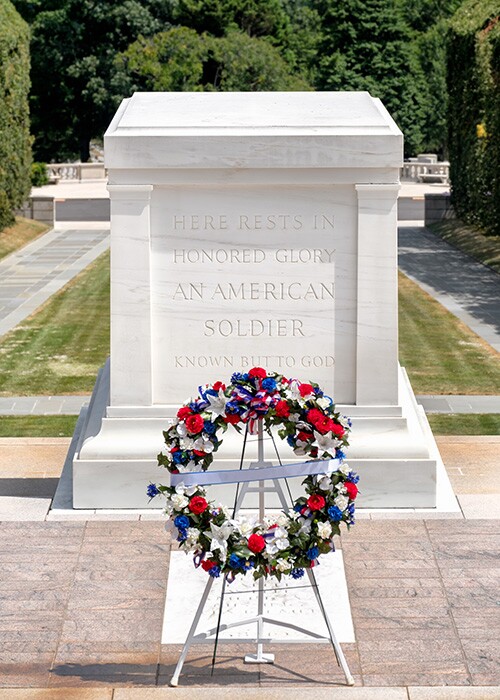
What Is the Tomb of the Unknown Soldier?
The Tomb of the Unknown Soldier is a monument that serves as a resting place for unidentified U.S. soldiers who died in combat. Starting after World War I, unidentified remains from major wars have been symbolically buried in the sarcophagus, where they serve as reminders of the sacrifices made in war by countless soldiers. The tomb allows people to pay respects to soldiers throughout history.
What Does the Tomb of the Unknown Soldier Represent?
The memorial represents unidentified soldiers who died in war, honoring the selfless acts of countless unknown individuals. The monument has four marble sides. On one end, three Greek figures stand united, representing peace, valor, and victory. On the opposite end, the monument reads, “Here rests in honored glory an American soldier known but to God.” On each of the sides, 3 wreaths are carved to represent major battles fought in World War I. In front of the tomb, marble slabs mark the resting places of soldiers from World War II, Korea, and Vietnam.
Where Is the Tomb of the Unknown Soldier?
The tomb is located in the Arlington National Cemetery in Arlington, Virginia. It sits atop a hill at the center of the cemetery, where it overlooks the nation’s capital, Washington, D.C. The Arlington National Cemetery resides alongside the Potomac River, where it has served as the final resting place for military personnel since the American Civil War.
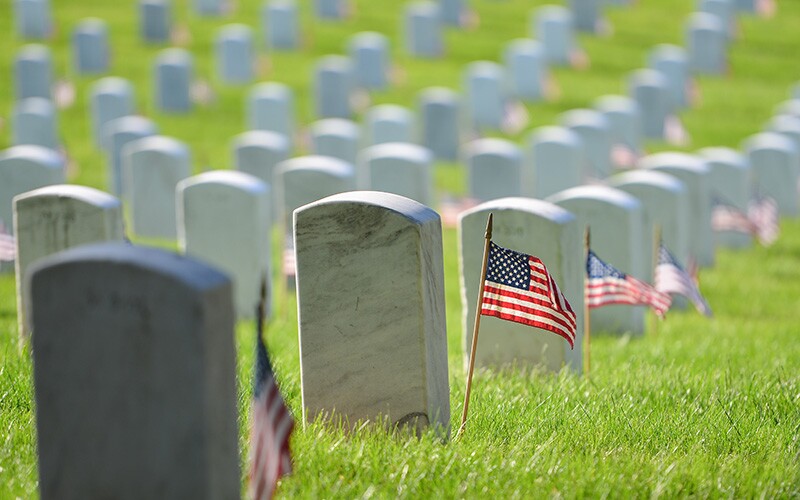
What Is the Story behind the Tomb of the Unknown Soldier?
Many of the soldiers who have perished in war throughout history have been left unidentified. In some wars, scarce records made it impossible to name the dead, and during other wars, damage to the bodies or inability to care for the deceased amidst combat have left others unnamed. In earlier wars, the deceased were often buried in mass or roadside graves.
The government has since taken steps to document soldiers and pay proper respect to those who lose their lives. Military dog tags and detailed military records help identify deceased soldiers, but some remains are still difficult to identify.
World War I brought with it waves of soldiers who died overseas. Was it worth bringing the bodies home? How would they manage it? France and the United Kingdom decided against bringing the bodies home. Instead, they opted to symbolically bury one unidentified soldier in a tomb that would represent the masses of soldiers lost.
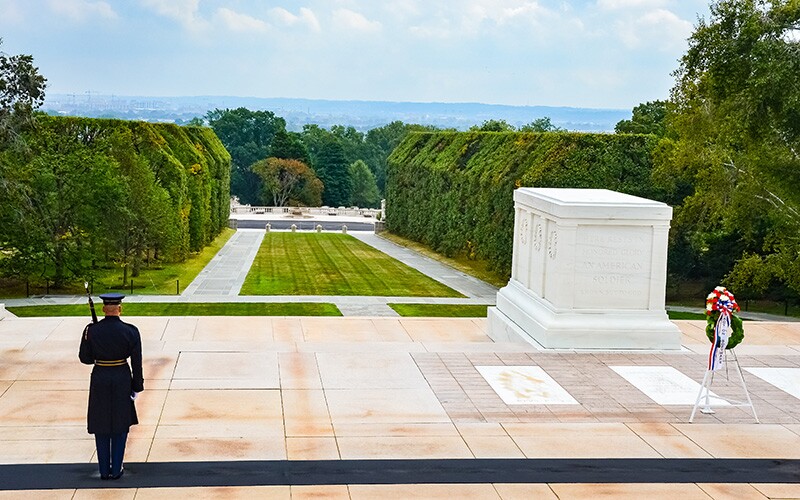
The United States allowed families the option to ship the remains of their loved ones home or to bury them in cemeteries abroad. The government also decided to dedicate a memorial to unidentified soldiers, like those in France and the United Kingdom.
Four bodies were exhumed from cemeteries in France, and one was chosen to be buried in the tomb. On Armistice Day, 11 November 1921, President Warren G. Harding held a ceremony to bury the soldier and honor the sacrifices made by others like him.
Who Is Buried in the Tomb of the Unknown Soldier?
Four people have been buried in the Tomb of the Unknown Soldier, one each for World War I, World War II, Korea, and Vietnam. However, the body buried on behalf of soldiers in Vietnam was later exhumed. DNA testing helped identify the body as Lt. Michael Joseph Blassie, and it was returned home. The crypt for Vietnam was left vacant, leaving the remains of three people at the memorial.
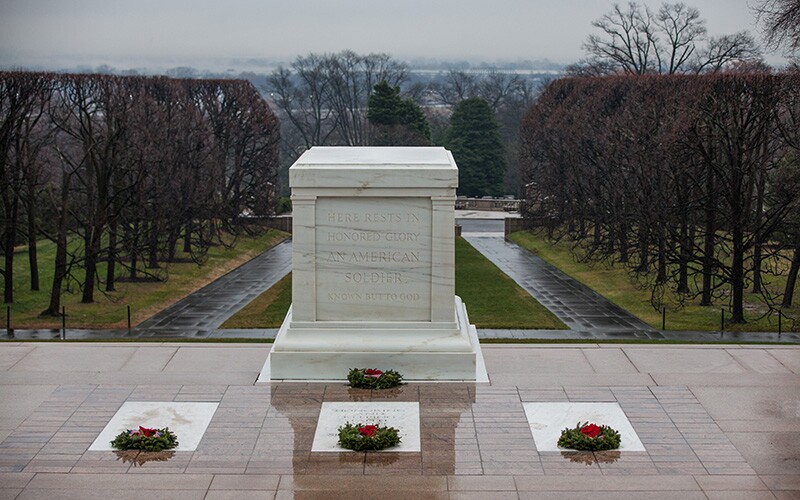
Who Guards the Tomb of the Unknown Soldier?
For 5 years, no one guarded the tomb. Tourists weren’t always respectful at the site, so guards were installed in 1926. Since then, the tomb has been guarded 24 hours a day every day of the year. The guards are volunteers from the 3rd U.S. Infantry Regiment, known as the “Old Guard.”
It is a rare honor to serve as one of the tomb guards, and it requires dedication. The guards live in quarters below the tomb and must meet specific qualifications, including rigorous training and designated heights. While on duty, guards maintain 90 steps per minute, marching in 21-step intervals to represent the honored 21-gun salute.
The changing of the guard occurs every hour to every half hour throughout the year, and visitors can watch the ceremony take place.
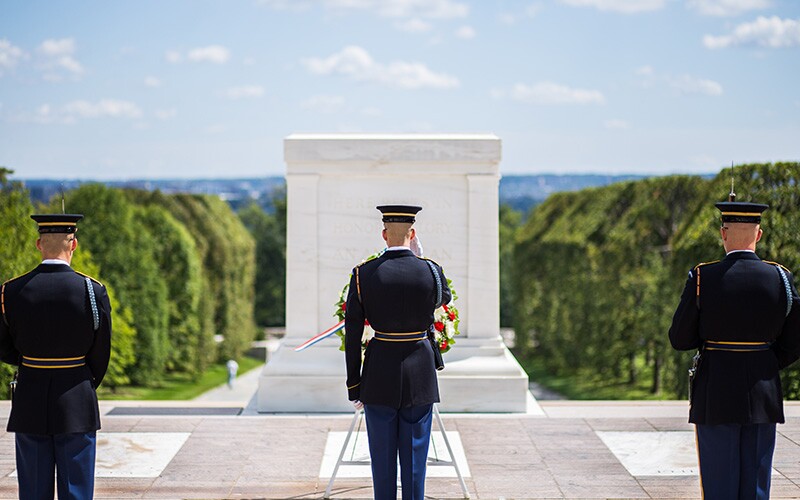
How Can You Honor U.S. Soldiers and Veterans?
The Tomb of the Unknown Soldier serves as a reminder of the sacrifices soldiers have made throughout U.S. history and honors soldiers for their bravery. On Veterans Day this year, the Tomb of the Unknown Soldier will be celebrating 100 years since the site was memorialized. Even if you can’t visit the memorial in person, you can still follow events and updates of the tomb to celebrate soldiers’ lives.
You can also learn about the soldiers in your family by searching soldier burial and veteran grave registration collections. Take an extra moment on Veterans Day to remember their lives and sacrifices. Upload interviews, photos, and anything else you have to FamilySearch Memories, or explore memories that others have shared to honor them.
Search Soldier Burial and Veteran Grave Registration Collections
For more information about searching United States military cemetery records, take a look at the FamilySearch Wiki. This article has a lot of great information about these records and other places you can find similar records. The National Cemetery Administration and the American Battle Monument Commission also have searchable databases on their websites that can be useful in your search.

